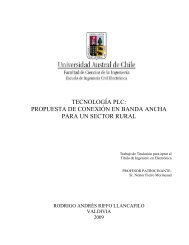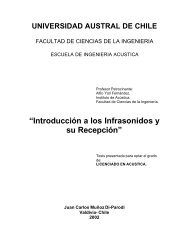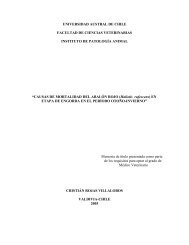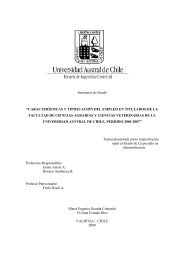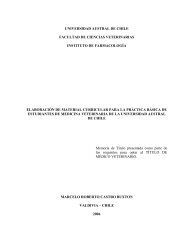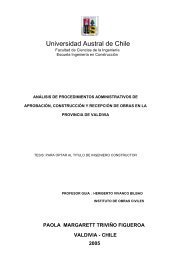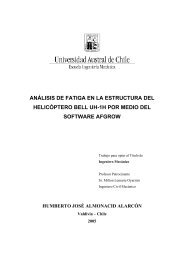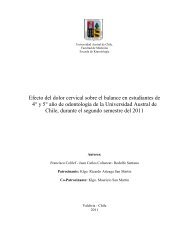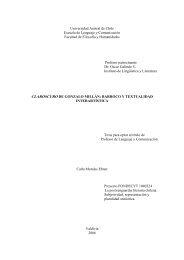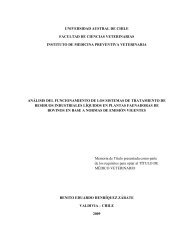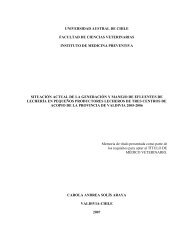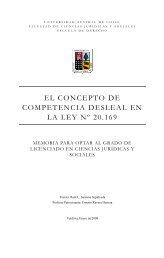Diversidad y control biológico de insectos - CyberTesis UACh ...
Diversidad y control biológico de insectos - CyberTesis UACh ...
Diversidad y control biológico de insectos - CyberTesis UACh ...
You also want an ePaper? Increase the reach of your titles
YUMPU automatically turns print PDFs into web optimized ePapers that Google loves.
strongly influenced by insect host (RAPD and RFLP, Maurer et al., 1997; RFLP, Viaud et<br />
al., 1996; ITS, Neuveglise et al., 1994). Again, this conclusion is refuted by other studies<br />
(ITS sequencing and RFLP, Coates et al., 2002; RAPD, Castrillo et al., 2004; Berreta et al.,<br />
1998; Urtz and Rice, 1997).<br />
The fungus Beauveria bassiana has been studied for more than 150 years and an asexual<br />
stage has been assumed for the most part of that period. In recent years, molecular studies<br />
have i<strong>de</strong>ntified Beauveria as the asexual stage of Cordyceps spp., which reproduces by a<br />
sexual cycle. Despite of the evi<strong>de</strong>nce for this linking, it seems that Beauveria spp. is<br />
asexual for the most of its lifecycle. Un<strong>de</strong>r this condition, some genetic recombination still<br />
is possible through parasexual cycle, during which vegetatively compatible hyphae fuse to<br />
exchange genetic material (Paccola-Meirelles and Azevedo, 1991). However, the<br />
parasexual cycle in this species is <strong>control</strong>ed by a strict recognition system and many<br />
different vegetative compatibility groups can be i<strong>de</strong>ntified in a sample (Castrillo et al.,<br />
2004). Consequently, the genetic exchange seems quite restricted in B. bassiana s.l.<br />
Another plausible explanation for the phylogenetic pattern showed in the Figure 1 is related<br />
what Rehner and Buckley (2005) proposed as cryptic speciation into the morphologically<br />
<strong>de</strong>fined B. bassiana. These authors reported that globally collected B. bassiana would be<br />
paraphyletic according to a two nuclear genes phylogeny, the elongation factor 1 alpha<br />
(EF1-α) and the ribosomal internal transcribed spacer (ITS). The combined analysis divi<strong>de</strong>d<br />
the previously i<strong>de</strong>ntified B. bassiana isolates in two cla<strong>de</strong>s separated by B. brongniartii.<br />
The B locus phylogeny mostly resembles this pattern and consequently a subset of Chilean<br />
isolates, representative of the major B fragment cla<strong>de</strong>s, was additionally sequenced for<br />
EF1-α (Devotto and Rehner, unpub. data). One isolate was more related to B. amorpha than<br />
B. bassiana, while one strain was grouped in one of the B. bassiana clusters and the<br />
remaining nine isolates were inclu<strong>de</strong>d in the paraphyletic B. bassiana cluster. It will be<br />
necessary to inclu<strong>de</strong> a larger Chilean sample in this proposed phylogeny to test if the<br />
Chilean population mirrors the pattern <strong>de</strong>tected for the Beauveria genus.<br />
28



